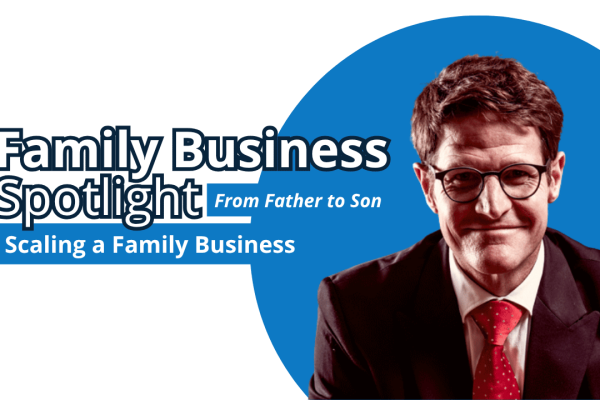Key Takeaways
- Delegate and define roles early: Scaling a family business became possible once responsibilities were clearly assigned, especially between family and non-family members.
- Structure drives scalability: While early growth was informal, formalizing roles and processes enabled the business to expand internationally and support over 140 employees.
- Letting go enables leadership: Ian’s willingness to delegate and relinquish control was crucial for long-term sustainability and succession planning.
- Family members bring passion, but need boundaries: Family involvement boosted commitment, but conflict was avoided by setting reporting lines and separating duties.
- Succession planning secures the future: Ian’s story underscores the importance of preparing the next generation and building a business that doesn’t rely on one person.
When Ian Saker joined his dad’s family business, there were just six people involved in the company. By the time he took over 12 years ago, this had grown to 25 people. That might sound like impressive growth already, but wait until you hear the latest headcount. The company now employs 142 people, with team members not only in South Africa but also in India, Ireland, and South Africa. So, how did Ian transform a small, family-run business into an international operation with over a hundred employees? What’s his secret to scaling so successfully?
The Importance of Delegation and Clear Roles
When Ian was ready to take over from his father a little over a decade ago, it wasn’t exactly what you’d call an official “taking over the reins” situation. Instead, it was a slow and gradual process in which certain responsibilities were given over. Scaling a family business wasn’t the first thought on his mind.
Initially, Ian’s dad handled the technical side and sales, leaving his son to handle everything else – from finance to marketing and HR, fell to Ian. Although at the time, with only five employees in the company, HR wasn’t such a big deal. But by the time Ian’s dad stepped down, there were more people available to take on some of the other responsibilities.
Ian admits that there was no secret to the initial growth of the company. He and his dad got on well, and since neither liked confrontation, issues were resolved quickly and calmly. And when Ian’s brother later joined the ranks, they took a preventative measure to avoid possible rivalry and conflict, by having him report to someone else. But at the same time, he admits that “structure was always hindsight…. We weren’t actually that intentional. We were clueless.”
So how did they manage to get the business to where it is now, then? In simple terms, structure became more important. All the employees’ work was task and role-based. Well, the non-family employees, that is. They had clear roles and responsibilities, but for the family, it was a case of simply doing what needed to be done.
According to Ian, “Having family working in the business is fantastic. There’s nobody that works as hard as the family in the business, because it’s not just for themselves – they’re doing it for themselves and for the rest of their family.”
And it’s not just the company itself that’s grown. What started off as a focus on the South African mining market has turned international. The company has clients in Canada and Southern Africa, Zambia, Zimbabwe, Namibia and will soon have a potential foothold in Australia.
So in addition to clear roles for staff, that meant a change to hybrid working, and a change of focus. It meant a new way of approaching different markets.
There Were Still Challenges
However, slowly giving over control and formalizing roles and responsibilities was not easy. Ian admits that delegating and the relinquishment of control is never easy. But it is an essential step for any family business looking to really scale.
Now, if anything happens to Ian, his company won’t grind to a halt. After all, there’s now a dedicated person responsible for all the tasks that need to happen to keep the business going. It might even include the next generation. Ian has three kids, who he’d like to go into the business with if that’s what they want. And thanks to the company’s growth, there are a lot of options. His children could go into finance or marketing or HR or whatever they are interested in.
Ian’s success is down to two key factors: having clear roles and responsibilities for everyone involved, and a willingness to lead in a way that includes giving up some control, for the sake of business continuity.
But unfortunately, this isn’t the case for all family businesses. Some face so many challenges that they don’t know where to start, and even when things go well, there’s a risk of it all ending without a good succession plan.
We Can Help!
To ensure that your family business doesn’t risk facing the common challenges experienced by so many, schedule a free Discovery Call with one of our advisors, to help you ensure that you’re scaling a family business so that it lasts for generations to come.
The information presented in this blog article is provided for informational purposes only. The information does not constitute legal, accounting, tax advice, or other professional services. We make no representations or warranties of any kind, express or implied, about the completeness, accuracy, reliability, suitability, or availability of the information contained herein. Use the information at your own risk. We disclaim all liability for any actions taken or not taken based on the contents of this blog. The use or interpretation of this information is solely at your discretion. For full guidance, consult with qualified professionals in the relevant fields.


